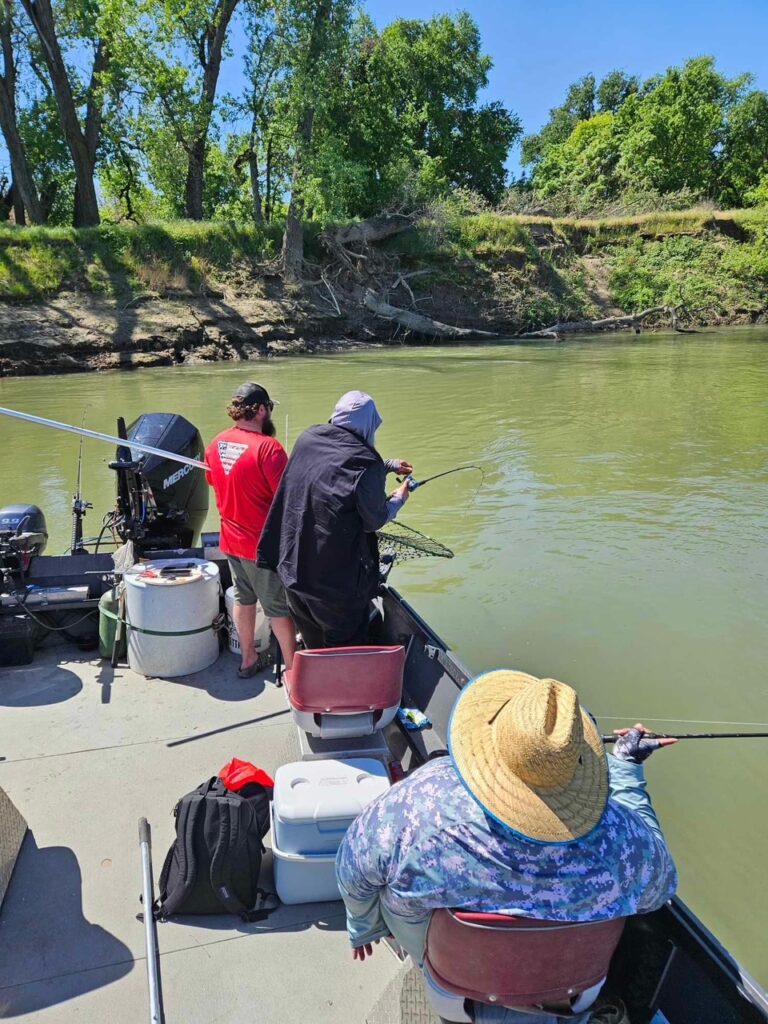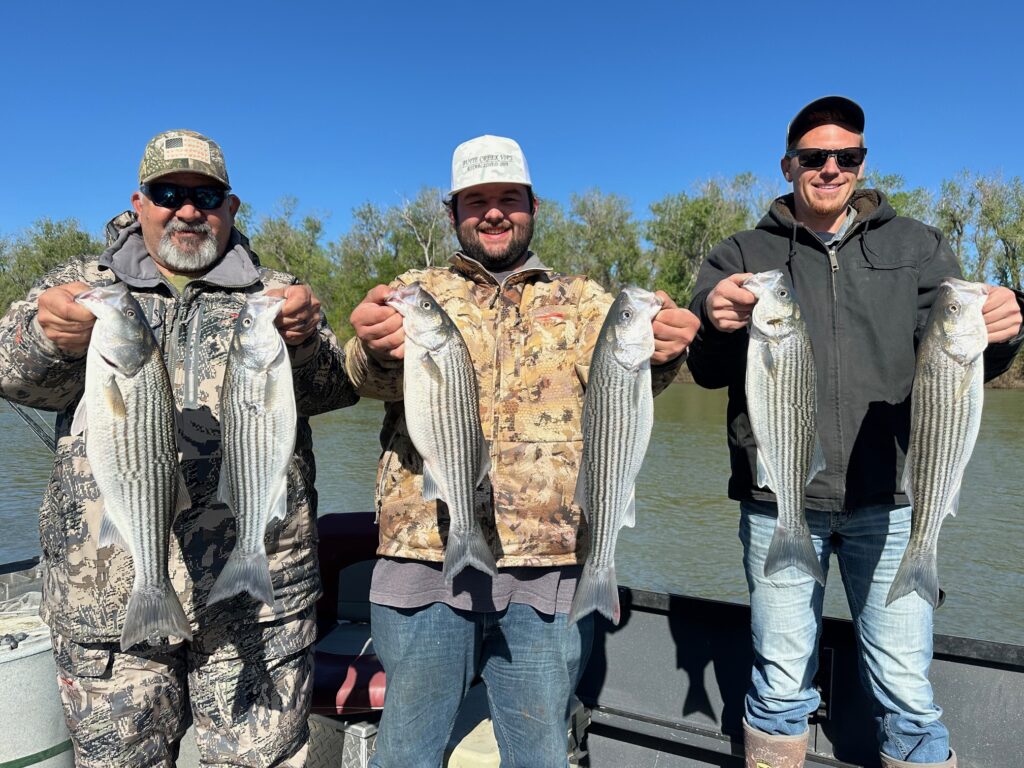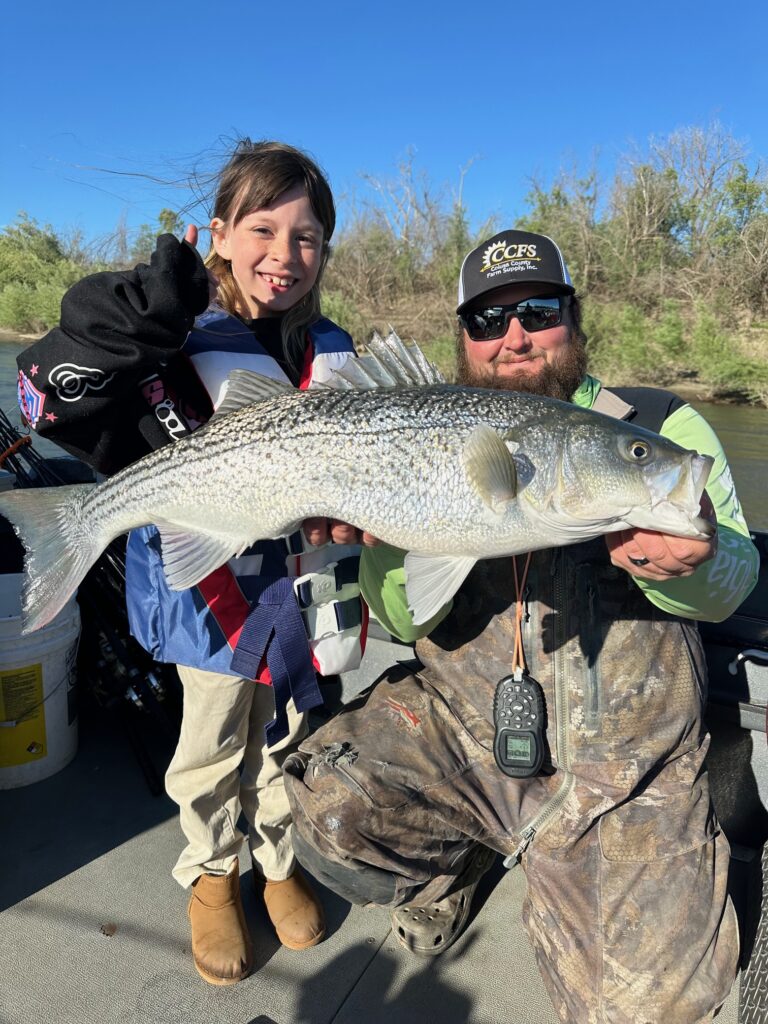Catch Spring Stripers With Cut Bait Crew
The following appears in the March issue of California Sportsman:

By Mark Fong
It’s that time of year. The trees are in bloom, the rivers are full, and when the calendar approaches April 1, these are all signs that it is striped bass time in Northern California.
From the Delta upstream to the Sacramento and Feather Rivers, the system is full of stripers making their annual migration to their spring spawning grounds. For many anglers, this is the apex of their entire fishing year.
While there are many different methods to catch striped bass, perhaps the most overlooked and effective choice is cut bait fishing. There is no denying that trolling plugs, tossing swimbaits or drifting live minnows get lots of attention from anglers, but day in and day out, the truth is that the old-school bait-and-wait approach just plain catches fish.
No one knows this better than Dakota Townley, who guides for spring stripers on the Sacramento River between Tisdale and Princeton. “Bait is a great option,” Townley says. “Especially early in the season when the water is cold and muddy. But don’t be fooled; it works throughout the spring and year as well.”

TIME TO BAIT UP
Bait fishing is done while on anchor. Townley likes to concentrate on inside river bends and turns in anywhere from 3 to 7 feet of water. There are days when Townley may start out in 3 feet of water only until his side-scan electronics alert him to the fact that he is fishing too deep and to move shallower – so shallow that his boat is barely floating, yet his catch ratio increases exponentially.
According to Townley, “A lot of guys want to sit in that deeper water near big dropoffs, but in my personal experience, that is just not the case, at least not in the upper sections of the river where we fish.”
Townley uses the standard fare of striper baits, including anchovies, sardines and pile worms. Rather than cut the bait into chunks, he likes to filet the bait off the backbone. Next, he inserts his hook through one end of the filet and takes the other end, pinches it up his leader line and wraps it with a specialized elastic bait tread to hold it firmly in place.
Townley says this rigging method improves his hookup ratio.
“You want to make sure your bait is real streamlined; you don’t want it to spin in circles. Instead, when you place your bait in the water, it should lay flat,” he says. “It kinda looks like a cone, and when the fish picks it up, he is grabbing right on the hook end.”
When a striper decides to bite, Townley coaches his clients not to react to the first strike but to wait as long as possible until the rod loads up and then to start cranking the reel. Townley is not an advocate of swinging on the fish on the initial bite, as he believes that a lot of anglers miss a lot of fish by doing so.

GEAR TALK
Townley constructs a leader with a 2-foot section of 15-pound monofilament line. To the business end he ties a 1/0 Owner mosquito hook, and a barrel swivel to the other. On his mainline from the rod, he threads on a snap swivel before attaching it to the barrel swivel tied to the leader. Finally, to the snap swivel, he’ll clip a cannonball sinker just heavy enough to keep his rig on the bottom.
Typically, Townley starts off with something in the 1- to 2-ounce range but will adjust accordingly for the speed of the current. His rod and reel combo consists of a 7-foot, 6-inch Kevin Brock Minnow Rod paired with an Abu Garcia 5500 Reel spooled with 65-pound braided line.
The next time you head out on the water in search of striped bass, don’t forget to consider grabbing a bag of bait from your local tackle shop; it just might surprise you. CS
Editor’s note: To book a guiding trip with Dakota Townley, contact him directly at (530) 680-3717. Follow Dakota on Facebook.

Sidebar: GUIDES DISH ON SPRING STRIPER RUN
With the spring striper run upon us, CS correspondent Mark Fong reached out to two of Northern California’s best guides, and here is what they had to say:
DAKOTA TOWNLEY, DAKOTA TOWNLEY GUIDE SERVICE; (530) 680-3717
“This season should be really good. It should be another high-water, great striper season. Anytime we have these big late-winter or early-spring storms, it kind of gets everything primed up. It gets the water really flowing and the fish just seem to get charged up. When we get these big high-water years, the number of fish we see is so much more and the quality can be good as well. And the season typically can last a little longer than normal – maybe into June – but April and May are the prime months, for sure.”
BRETT BRADY, BARE BONES GUIDE SERVICE; (530) 263-4451
“It’s going to be a boomer. We got good water and all the lakes are full, so hopefully we already have fish in the system. Everything is starting to stabilize and as long as we don’t get a March Madness blowout, we should be looking at an April 1 kickoff. I do believe that both the Sacramento and the Feather will be fishable this year. If we get storms, we may see the rivers fluctuate, so we will need to adapt. The fish will be in the rivers until they spawn, which typically happens when the surface temperatures reach 62 to 64 degrees. There will be waves of fish – some coming and some going – so I expect to see solid fishing for at least six weeks or so.” MF



